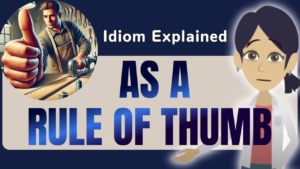Have you ever found yourself in the middle of an English conversation when someone exclaims, “This restaurant is the bee’s knees!” and you’re left wondering if you just missed an unusual reference to insects? You’re certainly not alone. English idioms can be puzzling, especially when they involve imaginative phrases that make little sense at first glance. This post will delve into one of these intriguing idioms—“bee’s knees”—to help you understand its meaning, origin, and real-life applications. By the end, you’ll be fully equipped to use this expression confidently and enrich your English vocabulary.
Why Idioms Are Essential for Your English Journey
Idioms are more than just colorful additions to a language; they reflect cultural nuances, historical contexts, and shared social experiences. For English learners, mastering idioms can:
- Boost Fluency: Using idiomatic expressions makes your speech sound more natural and fluent, helping you engage comfortably in discussions with native speakers.
- Enhance Comprehension: Recognizing idioms prevents confusion when they pop up in casual conversations, movies, or books.
- Show Cultural Understanding: Idioms often carry cultural references, and understanding them can provide deeper insights into the traditions, humor, and values of English-speaking communities.
Whether you’re aiming to navigate everyday chatter, watch films without pausing to Google unfamiliar phrases, or simply spice up your conversation skills, idioms are a fun and effective way to reach that goal. “Bee’s knees” is an excellent example of a phrase that can elevate your English once you grasp its quirky charm.
What Does “Bee’s Knees” Mean?
At its core, the idiom “bee’s knees” is a playful way to say that something or someone is excellent, outstanding, or the best of its kind. Despite the literal image of an insect’s tiny legs, there’s no actual connection to bees in the modern usage of this phrase. Instead, the expression conveys a sense of high praise.
- Key Point 1 – Understanding the Idiom:
If someone calls you the “bee’s knees,” take it as a genuine compliment. They’re essentially saying you’re remarkable, impressive, or top-notch in some context. - Key Point 2 – Common Confusion:
Since this idiom has nothing to do with bees literally, it can cause hilarious misunderstandings if taken at face value. One might imagine an insect doing something noteworthy with its knees! - Key Point 3 – Practical Examples:
- “Your new car is the bee’s knees—I can’t believe how smooth it drives!”
- “This chocolate cake is the bee’s knees. I’ve never tasted anything so good!”
- “Her presentation at work was the bee’s knees, leaving everyone in awe.”
By incorporating this idiom into your daily language, you can inject a dose of personality and warmth into your conversations.
Historical Background
The origin of “bee’s knees” remains somewhat mysterious, but it soared in popularity during the 1920s in the United States. The phrase was part of a cultural wave of playful expressions that captured the spirit of the Roaring Twenties—a time marked by jazz, flappers, and a general appetite for modernity and fun.
- Note on Origin:
While some suggest the phrase emerged from references to the “business” or “busy-ness” of bees, definitive historical proof is scarce. What we do know is that “bee’s knees” became one of many whimsical idioms—alongside “the cat’s whiskers” or “the snake’s hips”—that people used to praise anything fashionable or remarkable.
Common Misunderstandings and Anecdotes
It’s easy to see how “bee’s knees” can lead to comical mix-ups, especially for learners who aren’t familiar with idiomatic English:
- One humorous anecdote tells of an individual who believed “bee’s knees” referred to a special dance move. They spent an evening at a party trying to mimic how a bee would move its knees, only to realize later it was a compliment, not an instruction.
- Another person once responded to the compliment “You’re the bee’s knees” with, “Well, your shoes are the ant’s ankles,” thinking they were expected to reciprocate with a similar insect-themed remark. Although it might have been a funny moment, it also highlights how literal interpretations can result in awkward or amusing exchanges.
Understanding these types of stories underlines the importance of studying idioms. Once you grasp their figurative meanings, you can avoid confusion and respond appropriately—even with a witty comeback of your own.
How to Use “Bee’s Knees” in Real-Life Situations
Plenty of English learners want to know the right context for slipping an idiom into conversation. Here’s how you can do so without sounding forced or unnatural:
- Compliment Someone’s Achievement:
- “That final report you wrote was the bee’s knees. It impressed the entire team.”
- “Your cooking skills really are the bee’s knees—this meal is delicious!”
- Praise a Product or Place:
- “Have you tried the new café downtown? Their pastries are the bee’s knees.”
- “I just bought a new smartphone, and it’s the bee’s knees. Super fast and easy to use.”
- Highlight an Outstanding Experience:
- “My vacation was the bee’s knees—the scenery was breathtaking, and the food was exceptional.”
- “The live concert last night was the bee’s knees. Every song was performed perfectly.”
Whenever you want to convey genuine admiration, slip in this idiom to add a lighthearted, friendly tone. Just be sure the situation is relaxed enough to accommodate a playful expression. In very formal or academic settings, you might opt for more direct phrases like “excellent,” “extraordinary,” or “outstanding.”
Similar and Opposite Expressions
Idioms rarely exist in isolation. Exploring related expressions can expand your vocabulary and equip you with more ways to convey either approval or disapproval.
- Similar Expressions
- “The cat’s whiskers”: Another charming 1920s-era phrase meaning something is top-tier.
- “The dog’s bollocks”: A British slang phrase that likewise signifies something is truly excellent (though be aware it’s somewhat informal).
- Opposite Expressions
- “The pits”: Used when something is particularly bad or disappointing.
- “The worst”: A straightforward way to describe something of the lowest quality.
By learning these expressions alongside “bee’s knees,” you’ll have a flexible range of idioms to express varying degrees of quality, from the very best to the absolute worst.
Practical Strategies to Remember “Bee’s Knees”
Memorizing any idiom can be challenging at first, but here are a few simple strategies to make the process smoother:
- Visual Association
Imagine a busy bee with large kneecaps carrying pollen. This mental picture can be whimsical enough to stick in your mind, helping you recall that “bee’s knees” points to something special or essential. - Personal Examples
Think of something in your own life you consider outstanding. For instance, if you have a favorite coffee brand or a hobby you excel at, label it as the bee’s knees in your internal monologue. The more personal the association, the easier it is to remember. - Create Short Dialogues
Write mini-conversations where you incorporate “bee’s knees.” For instance:- A: “How was the new sushi place?”
- B: “It was the bee’s knees! The freshness of the fish was unbeatable.”
- Stay Alert for Idioms in Context
Whenever you watch English-language content or read articles, keep an eye (or ear) out for idiomatic phrases. Jot them down and try to understand them in context. While “bee’s knees” may not appear as frequently as some other idioms, recognizing any idiom’s usage trains your brain to be ready for other, similarly playful expressions.
Real-Life Applications: Success Stories
One of the joys of mastering an idiom is being able to interpret it on the spot and respond gracefully, especially in moments when it carries genuine praise. Here are a couple of scenarios illustrating how “bee’s knees” can apply to real-life success or social interactions:
- Workplace Triumph
- Scenario: An employee who has been diligently honing presentation skills finally delivers a project pitch that dazzles the entire boardroom.
- Outcome: The CEO congratulates them afterward, remarking, “That was absolutely the bee’s knees. You’ve raised the bar for everyone here.”
- Why It Matters: The employee doesn’t just understand they did “well”; they understand they excelled, thanks to this idiom.
- Social Gathering Grace
- Scenario: You’re at a dinner party and someone says, “This homemade pasta is the bee’s knees!”
- Outcome: Recognizing the compliment, you might add, “No kidding—this sauce is out of this world. I’ll definitely be back for seconds!”
- Why It Matters: You show cultural awareness by seamlessly engaging in the praise rather than misunderstanding the compliment or missing the humor.
These examples highlight how using or understanding idioms can enhance interactions and create memorable moments, both professionally and socially.
A Quick Quiz to Test Your Knowledge
Let’s do a brief quiz to make sure you’re comfortable with the idiom:
Question: What does the idiom “bee’s knees” generally signify?
- The worst possible aspect of a situation.
- Something that is ordinary or average.
- Something or someone that is excellent or top-notch.
Answer:
- Option 3 is correct. “Bee’s knees” is an idiom used to describe a person, place, or thing as outstanding or of the highest quality.
If you chose another option, simply revisit the key points in the sections above to reinforce your understanding.
Example Sentences and Rephrasing
Below are extra sentences to help you solidify your grasp of this idiom:
- “I used to think my old computer was the bee’s knees until I tried a new high-performance model.”
- Rephrase: “My old computer seemed great, but the latest model showed me what top-notch really feels like.”
- “Our family holiday in the mountains was the bee’s knees. We’re already planning to go back next year.”
- Rephrase: “We had an exceptional trip and can’t wait to return.”
- “His coaching style is the bee’s knees; every player improves quickly under his guidance.”
- Rephrase: “He’s an outstanding coach, so the entire team benefits from his methods.”
By practicing these sentence structures, you’ll become increasingly comfortable with inserting “bee’s knees” into your everyday dialogue, especially when you want to convey genuine enthusiasm.
Final Thoughts
Embracing idioms is a significant step in elevating your English communication skills. “Bee’s knees” may sound funny at first, but it’s a delightful way to offer high praise or emphasize how remarkable something is. Here’s a quick recap:
- Definition: “Bee’s knees” refers to something that is excellent, remarkable, or of the highest quality.
- Origin: Gained popularity in the 1920s and remains in occasional use today to convey admiration.
- Context: Best used in casual conversations, social events, or lighthearted situations where a playful expression is welcome.
- Similar Idioms: “The cat’s whiskers,” “the dog’s bollocks” (informal), “the cream of the crop,” and “top of the line.”
- Opposites: “The pits,” “the worst.”
By integrating “bee’s knees” into your vocabulary, you can add flair to your speech and connect more closely with native English expressions. The key is to practice, remain observant for idiomatic phrases, and have fun experimenting with them. Over time, you’ll find that phrases like “bee’s knees” become second nature—a small but significant sign of true comfort in English.









Comment